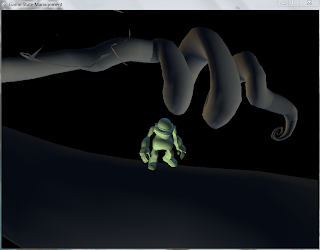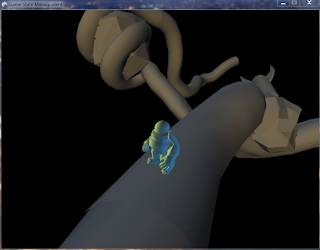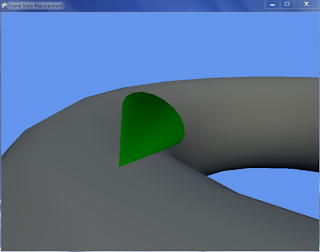Space Owl Productions are proud to present the first steps of Cosmic Roots, our focused project for this year!
Cosmic Roots is an action adventure game, which will use spline based gravity to create an interesting and unique environment to explore. Think of Super Mario Galaxies, set in a root network, in space. With bugs.
What we aim to deliver is this; a bright and uniquely styled environment, with simple and satisfying combat. By the end of our study year, we hope to have Cosmic Roots available on XBL.
Currently, we are developing Cosmic Roots in XNA, and delivering a prototype for it within the next week. This prototype will demonstrate the spline based gravity, basic combat, textures, models and animations.
So what's the story? In Cosmic Roots, you play as a Spaceman, far from home, whose ship has been hit by an asteroid mid course, and has crashed into the strange root system of a space tree. Wielding only your ships bulkhead as a makeshift weapon, you must traverse the roots and collect engine parts, while beating back the bugs who live there!
This blog has been established to document our work up to and beyond this point of development, including videos, screenshots and feedback from others. With any luck, it'll serve as not only a database for us, but a source of interest for you, the reader! For now, all images, media and information regarding Cosmic Roots should be viewed as works in progress!






























